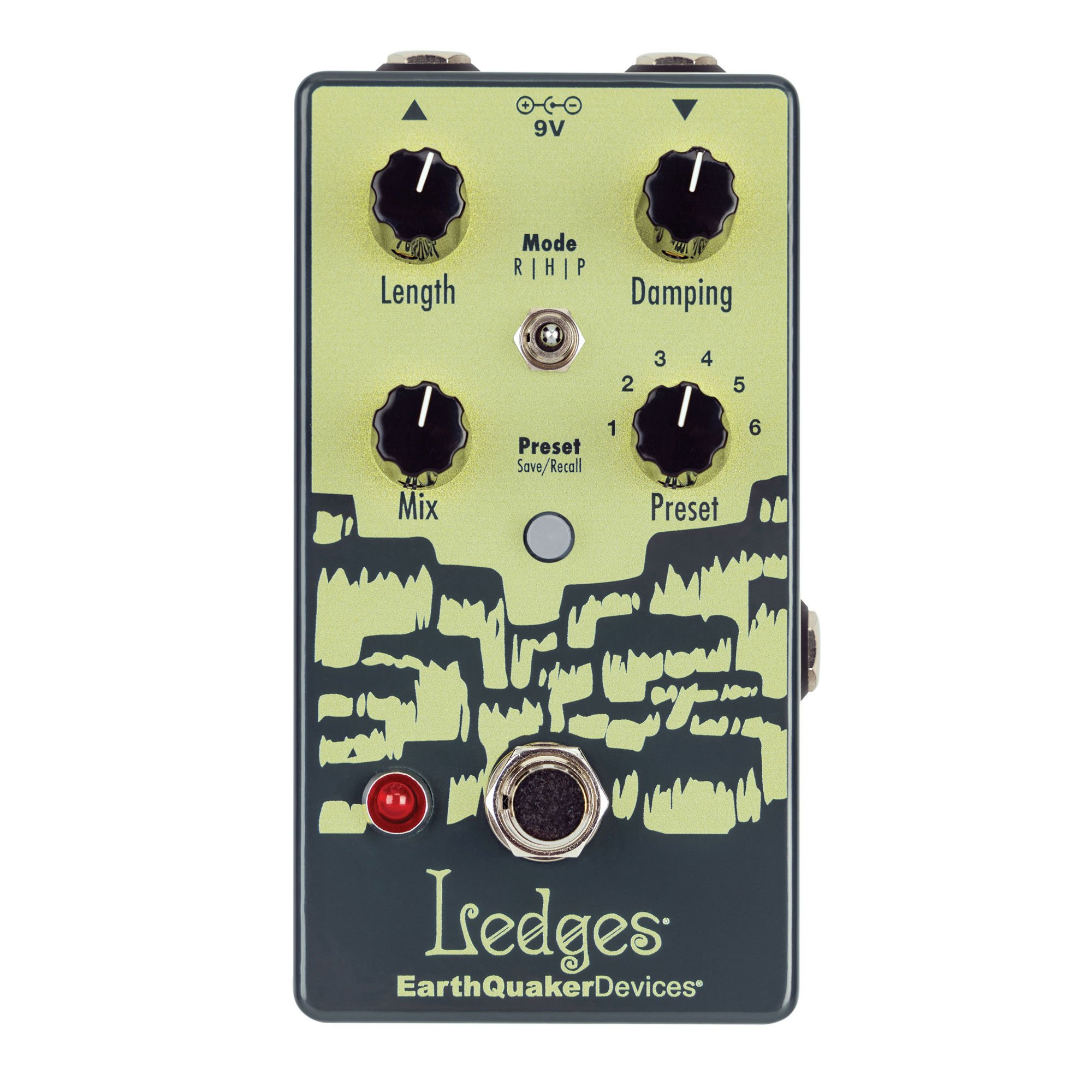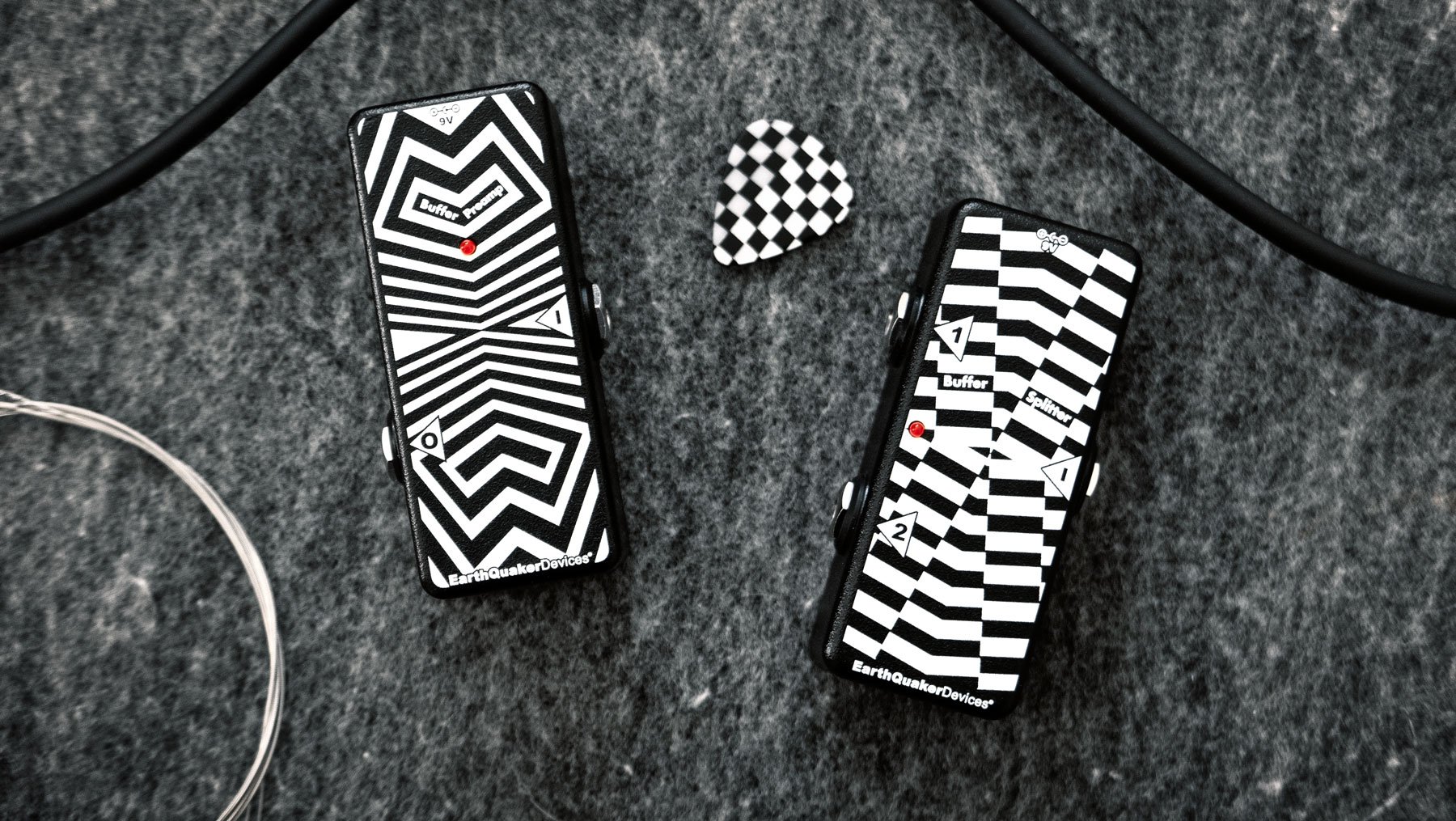Six Songs You Can Use Ledges to Emulate
Dan Epstein
Reverb was the very first guitar effect. Long before electricity was discovered, guitarists (like countless other musicians before them) found that they could make their instruments sound bigger and richer by playing them in spaces both natural and man-made that had resonant acoustics.
Once the age of recording dawned, reverb became a constant issue for studio engineers, who did whatever they could to combat it before finally coming to the realization that — at least when applied judiciously — reverb could actually make their records sound better. In 1947, legendary engineer Bill Putnam Sr. became the first to employ artificially created reverb for a recording session, when he turned a restroom on the 42nd floor of the Chicago Civic Opera House (where Putnam’s Universal Recording Corp. resided at the time) into an echo chamber in order to add some depth and flavor to The Harmonicats’ “Peg O’ My Heart.” Sid Fisher, who played the reverb-drenched guitar lines on the million-selling hit, thus became the first guitarist to benefit from Putnam’s technological breakthrough.
Seventy-six years later, EarthQuaker Devices has unveiled Ledges, a three-mode reverb pedal that would have surely blown Sid Fisher’s mind if he’d only lived long enough to step on it. After playing around with it for a couple of weeks, I can certainly attest that its versatility, ease of use and wide array of reverbs has blown mine.
Ledges features three switchable reverb modes — Room, Hall and Plate — which can take you anywhere from classic to crazy with just a few subtle tweaks of its three control knobs. The Length control sets the length of the reverb; the Damping control tames the treble of the reverb reflections; and the Mix control adjusts the level of the reverb. Sounds simple, right? It is…but this pedal will also open up your guitar sound in ways you haven’t even imagined yet.
Ledges also comes complete with an Expression control jack, which enables you to change your Length, Damping and Mix on the fly with the help of any TRS expression pedal, and a Preset function which allows you to save and recall up to six of your favorite reverb settings. Here are six of my favorites that I’ve discovered while plugged in to this pedal, which are really just a small sampling of the multitude of diverse reverb flavors that Ledges has in store for you.
(Note: While I can testify that Ledges does sound fantastic when placed in an amplifier’s effects loop, not all amps have them. I found all of these settings with Ledges on my pedalboard, placed as the last effect before my guitar signal hit the front end of my amp.)
Gene Vincent & His Blue Caps — Race with the Devil
Back in 1954, Sam Phillips of Memphis’ Sun Studios created a “slapback” echo effect by running two Ampex 350 tape recorders simultaneously but at slightly different speeds. Phillips used the effect to add atmosphere and intensity to Elvis Presley’s Sun Records sides, and it quickly became the de rigueur flavor for rock n’ roll records of the era. You can hear slapback all over the 1950s records of rockabilly legend Gene Vincent, several of which — like 1957’s road-burning “Race with the Devil” — featured the jaw-dropping fretwork of enigmatic lead guitarist Cliff Gallup. To really nail Gallup’s sound on “Devil,” you’d need a Gretsch Duo-Jet strung with heavy flatwounds and a Fender tweed amp; but even if you don’t have either of those things, this Ledges setting will definitely put you in the race. Put the pedal in Room mode (“R”), crank the Length all the way to 5 o’ clock to emulate a larger room, set the Damping at 10 for some trebly sparkle, and put the Mix at Noon. Played through a clean amp, this slapback-y setting will have you yelling “Go, Cat!” in no time.
The John Barry Seven and Orchestra — The James Bond Theme
Penned by Monty Norman and arranged by John Barry, the iconic “James Bond Theme” has been featured in every Bond film since 1962’s Dr. No. Recorded at London’s Lansdowne Recording Studios with a band that included five saxophones and nine brass instruments, the track is nonetheless best remembered for the twangy single-note motif contributed by John Barry Seven guitarist Vic Flick. Flick’s minor-key picking was further accentuated by producer John Burgess’s use of the studio’s EMT 140 plate reverb, which was a massive steel plate suspended by springs that created a splashy, metallic sound when hit with a signal. To achieve a similar effect with Ledges, switch the pedal to Plate mode (“P”), then set the Length, Damping and Mix controls all to Noon. This setting also works great for any surf- or spaghetti western-style sounds, or any other style where you want to give your clean guitar tone an ominous, clangy flavor without totally drowning it in “wet” reverb.
The Who — Shakin’ All Over
Long hailed as one of the best live rock albums ever made, The Who’s 1970 LP Live at Leeds — which has since been reissued in several expanded versions — is a no-frills document of a band at the very peak of its awesome onstage abilities. The rawness of the recording only adds to the immediacy of the performance; I’ve always loved how you can actually hear Pete Townshend’s brutally loud guitar slamming off the back of the 2,000-capacity University of Leeds Refectory and back into the microphones, creating a slapback-on-steroids effect in the process. To achieve a similar effect without blowing out your hearing or earning an eviction notice, switch your Ledges pedal to Hall mode (“H”), set the Length control to Noon to emulate a medium-sized hall, put the Damping at 10 o’clock to get a hefty dose of trebly, teeth-rattling reverb reflections, and set the Mix at Noon. Add a mildly crunchy distortion pedal to the mix, and you’ll be ready to emulate The Who’s turbo-charged rendition of Johnny Kidd & The Pirates’ “Shakin’ All Over”.
Van Halen — Ain’t Talkin’ ‘bout Love
Controversy rages to this day over whether or not Van Halen and their producer Ted Templeman employed plate reverb on the band’s groundbreaking, self-titled 1978 debut. Many VH fanatics insist that the incredible stereo reverb effect on Eddie’s guitar was the result of the live echo chamber at L.A.’s Sunset Sound, while Eddie himself testified in a 2014 Guitar World interview that the album is “bathed” in EMT plate reverb — and that he and his brother Alex always hated how it sounded. But tracks like “Ain’t Talkin’ ‘bout Love” sure sound to me like the result of a plate reverb, and I think they sound awesome, so I tried using Ledges to conjure up that same kind of effect. (Minus the stereo separation, of course, as I can’t pull that off with only one amp). By setting the pedal to Plate mode (“P”), dialing the Length control all the way down to 7 o’clock, cranking the Damping all the way up to 5, and putting the Mix at 10, I found something that sounds similarly “rotten to the core,” especially when combined with distortion, phasing and echo effects. As Diamond Dave himself might say, “Ooooh yay-uh!”
Jeff Buckley — Hallelujah
Jeff Buckley’s deeply emotional rendition of Leonard Cohen’s “Hallelujah” — inspired by John Cale’s earlier cover version — was one of the highlights of his acclaimed 1994 debut Grace, and remains a stunning example of the late singer-songwriter’s exquisitely soulful vocals. But equally gorgeous is the reverb that producer and engineer Andy Wallace dialed in on the track for Buckley’s guitar. Wallace blended reverbs of multiple lengths at the mixing board in order to achieve that transcendent sound, but you can come pretty damn close to it using only Ledges. Just set the pedal to Hall mode (“H”), set the Length and Mix controls at 2 o’clock to get a big, church-y sound, turn the Damping all the way up to 5 to eliminate any harshness when the notes are plucked, and you’re basically there. You’re on your own trying to sing like Buckley, though.
Scott Walker — Boy Child
Okay, so the late, great existential crooner Scott Walker wasn’t exactly known for his sick guitar tones, and “Boy Child” — a haunting track from his brilliant 1969 album Scott 4 — may not actually have any guitars on it at all. But I’ve long been obsessed with the mournful balalaika figure that opens the song, and the reverent ambience that surrounds it; so when I accidentally discovered that Ledges could actually make my guitar sound like that balalaika, I was absolutely overjoyed. I set the pedal to Plate (“P”) mode, dialed the Length control to Noon, pushed the Damping to 3 o’clock, and cranked the Mix all the way to 5 o’clock, resulting in a glorious reverb that made the individual notes of my guitar sound as if they were climbing the stairs to the high altar of St. Peter’s Basilica. But hey, if chasing Scott Walker’s balalaika tones isn’t your bag, you can always just kick on your distortion — paired with this Ledges setting, it’ll make you sound like you’re shredding on the lip of the Grand Canyon.
Dan Epstein is an author, editor, journalist and guitarist based in New York's Hudson Valley. He writes about his latest musical obsessions at Jagged Time Lapse, and songs from his latest musical project The Corinthian Columns can be found at corinthiancolumns.bandcamp.com












